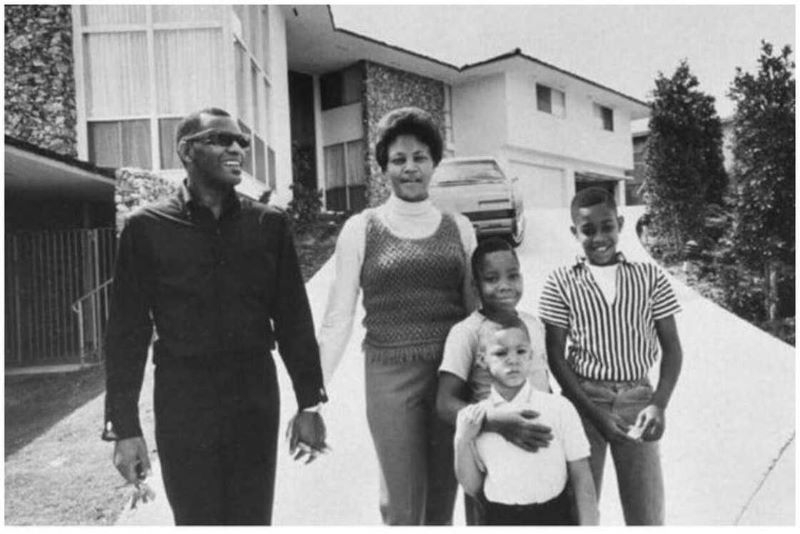Moving into a new home is an exciting yet emotional experience. It’s a fresh start, a new chapter—but before embracing your new space, you must let go of the old one. Moving can be overwhelming, and feeling excitement and nostalgia is natural. But, leaving behind your old home and the memories and comfort it provided can be the first step toward forming a deeper emotional connection with your new one.
Let’s start by discussing some practical moving tips and how to connect emotionally with your new home. The key is to move forward while cherishing what was, without letting it hinder the excitement of what’s to come.
Leave the Old Home in the Past: Moving Tips
Before setting up your new space, it’s important to mentally and physically leave your old home behind. Packing up memories, cherished items, and family history can trigger emotional responses, but it’s essential to approach the process with mindfulness.
Start by organizing your move in stages. Don’t leave everything for the last minute. Begin with non-essential items, then tackle the more significant things closer to moving day. As you pack, reflect on the memories attached to each item. Whether it’s the couch you spent countless evenings on or the kitchen table where you shared family meals, acknowledge these memories, but let them stay in the past. You can keep items that bring comfort, but don’t let sentimentality slow you down.
If you’re feeling stressed about the logistics, hiring moving companies like United can help ease the burden. Their professional movers will ensure your belongings are handled carefully, leaving you free to focus on the emotional aspects of the move.
On moving day, focus on the excitement of a new beginning. This is an opportunity to start fresh and create a space tailored to your vision. Take photos, make notes, and document your journey so you can look back fondly, but don’t linger in the past. Permit yourself to move on—both mentally and physically—so you can truly embrace your new home.
Understand What ‘Home’ Means to You
Consider what home means to you before rearranging furniture or choosing paint colors. Everyone’s definition is different. For some, home means peace and solitude; for others, it represents family, warmth, and chaos. Reflecting on this question can provide clarity and direction as you begin your transition.
Think about your past homes and what you loved—or didn’t love—about them. What made you feel at ease? What features or routines gave you comfort? Write down these thoughts or create a vision board to guide your efforts. Creating a space that supports it becomes easier when you define what you want emotionally.
Make It Your Own with Personal Touches
A house becomes a home when it tells your story. Personal items like photographs, artwork, books, or souvenirs add emotional value and visual warmth. Choose pieces that carry meaning instead of filling space with decor that looks good on Pinterest. They remind you of where you’ve been, what you love, and who you are.
This doesn’t mean you have to spend a lot of money. Even simple changes—repainting a room in your favorite color or placing your favorite mug on display—can foster a sense of ownership. When your home reflects your unique personality, it feels more genuine and more comforting with every passing day.
Create New Rituals and Routines
Establishing new rituals in your space helps build familiarity. Whether brewing your morning coffee in the same cozy corner or unwinding with a book every evening, these routines help solidify your daily rhythm. They make your new space feel functional, dependable, and emotionally grounding.
Over time, these small acts become part of your home’s identity. They give meaning to your surroundings and help form comforting habits. Even mundane routines—like watering plants or organizing mail—can be grounding rituals that link you to your new environment in subtle, powerful ways.
Connect with the Space Through All Your Senses
Emotional connection isn’t just about what you see—it’s also about what you hear, smell, touch, and taste. Use scent to make the space feel familiar. Bake something nostalgic, light a candle you used in your previous home, or experiment with essential oils. These scents can trigger emotional responses that enhance your bond with the house.
Layer in other senses as well. Soft lighting creates atmosphere, cozy textures like blankets and pillows add comfort, and background music can turn silence into serenity. Even enjoying a homemade meal at your new table deepens the emotional footprint. These sensory cues quietly help your house feel more like a place you belong.
Build Relationships Within Your Community
Your neighborhood significantly affects how connected you feel to your home. Forming relationships with neighbors, shop owners, and community members can dramatically enhance your sense of belonging. Introduce yourself, join a local club, or attend community events. These small efforts can lead to meaningful bonds.
When you feel welcome in your surroundings, your home becomes more than just the interior walls. It becomes part of a more extensive network. The more people you know and recognize daily, the more you feel rooted. A connected community helps transform a new house into a lifelong home.
Be Patient with the Process
Building an emotional connection with your home doesn’t happen instantly. It’s a process that unfolds over time. There may be moments when the house still feels unfamiliar or homesickness kicks in, especially if you moved from a place filled with fond memories. That’s completely normal.
Give yourself space to adjust without rushing the emotional transition. Embrace the imperfections. Understand that feelings of attachment grow gradually, through routines, experiences, and personal investment. Patience and intention are key. With time, unfamiliar corners will begin to feel like second nature.
Celebrate Milestones, Big and Small
Marking your progress in the new home can strengthen your emotional ties. Celebrate your first dinner cooked in the kitchen or your morning waking up to natural light in the bedroom. These seemingly minor events build your personal history within the space.
Capture these moments. Take photos, write in a journal, or pause to appreciate them. These milestones remind you of your growth and help create an emotional narrative. The more memories you build, the deeper your connection becomes—and the more your house feels like home.
Conclusion
A genuine emotional connection with your home isn’t created in a day. It’s the result of thoughtfulness, patience, and genuine effort. Every decision, from the routines you make to the relationships you build, contributes to a space that feels entirely your own.
So take your time. Decorate meaningfully, embrace rituals, engage your senses, and root yourself in your community. In doing so, you’ll discover that the emotional bond you form with your home isn’t just possible—it’s inevitable. And your forever? It starts right here.










